Interpreting Aerial Images
Aerial Photographs can be difficult to interpret and analyse. On a map, features are standardised to aid understanding. By contrast, an aerial photograph presents raw visual data, captured by a camera from thousands of feet above the earth. Photographic interpreters and imagery analysts use a range of techniques to extract useful information from a photograph.

Stereoscopic Viewing
One of the elements that made Allied photographic reconnaissance so successful during the Second World War was the use of stereoscopic viewing. This allowed photographic interpreters to view aerial photographs in three dimensions.
First developed in the 1830s, stereoscopes are binocular optical instruments which allow the viewer to look at two overlapping photographs at the same time. They work by presenting each image to each eye separately, whereupon a person’s natural depth perception ‘fuses’ the images into a single, three-dimensional image. This means that features which are not noticeable in two dimensions appear to have relief and are more visible. Aerial photographs have an overlap of at least 60% along the line of flight, to allow stereoscopic viewing.

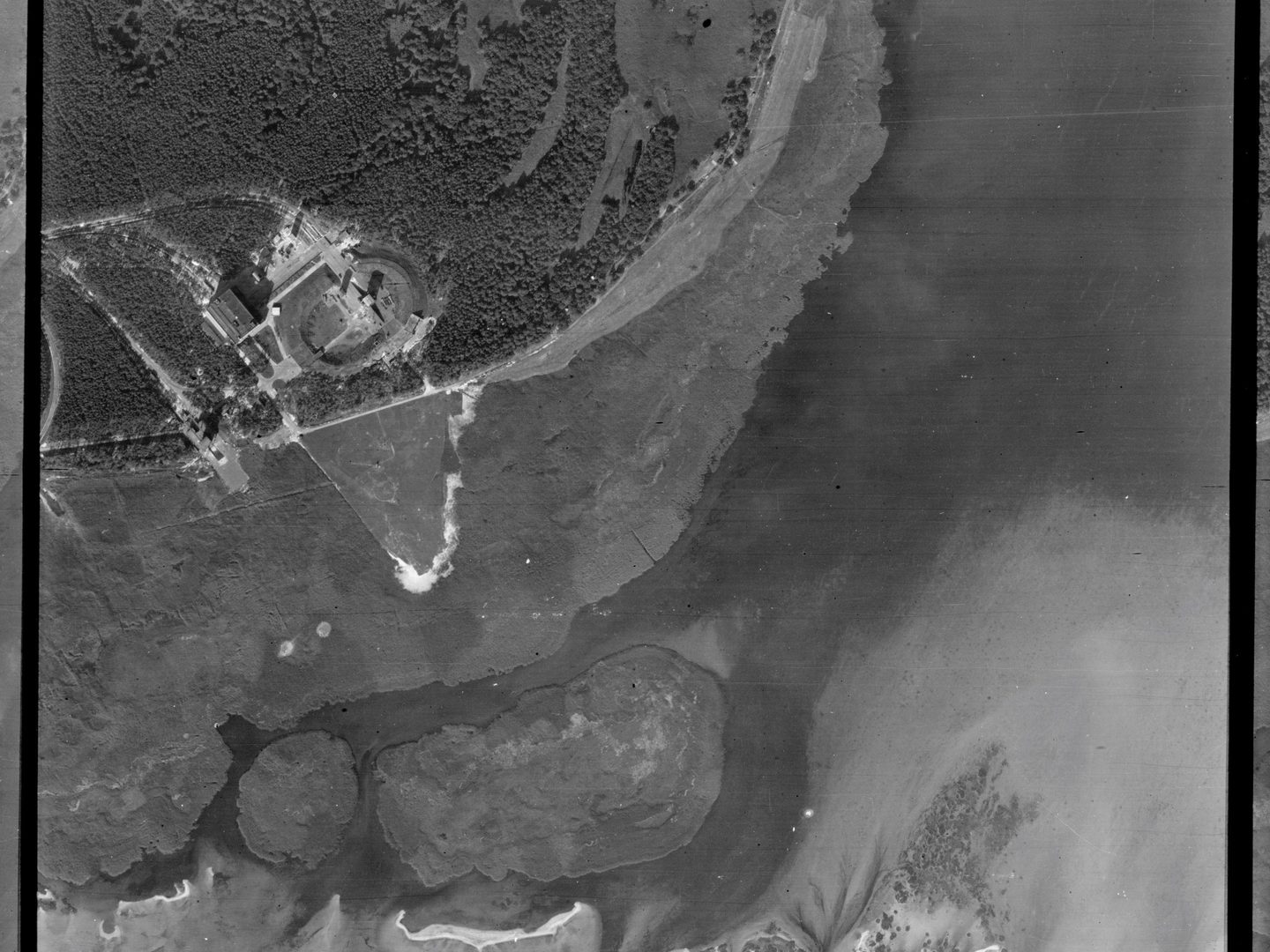
Shape and Size
Shape refers to the general form, configuration or outline of an object and is usually the first thing the eye sees in an aerial photograph. Often it can provide immediate identification, but many features have a similar shape. For example, a circular object could be a gas holder, a well, a chimney or a roundabout, depending on its size and location.

Size is another useful quick identifier. The size of a feature in an aerial photograph is found in two ways. The feature can be compared to a known and recognised object. If a round object is next to and much smaller than a house, it is more likely to be a well than a gas holder. Alternatively, if the scale of the photograph is known, the exact size of the object can be measured.
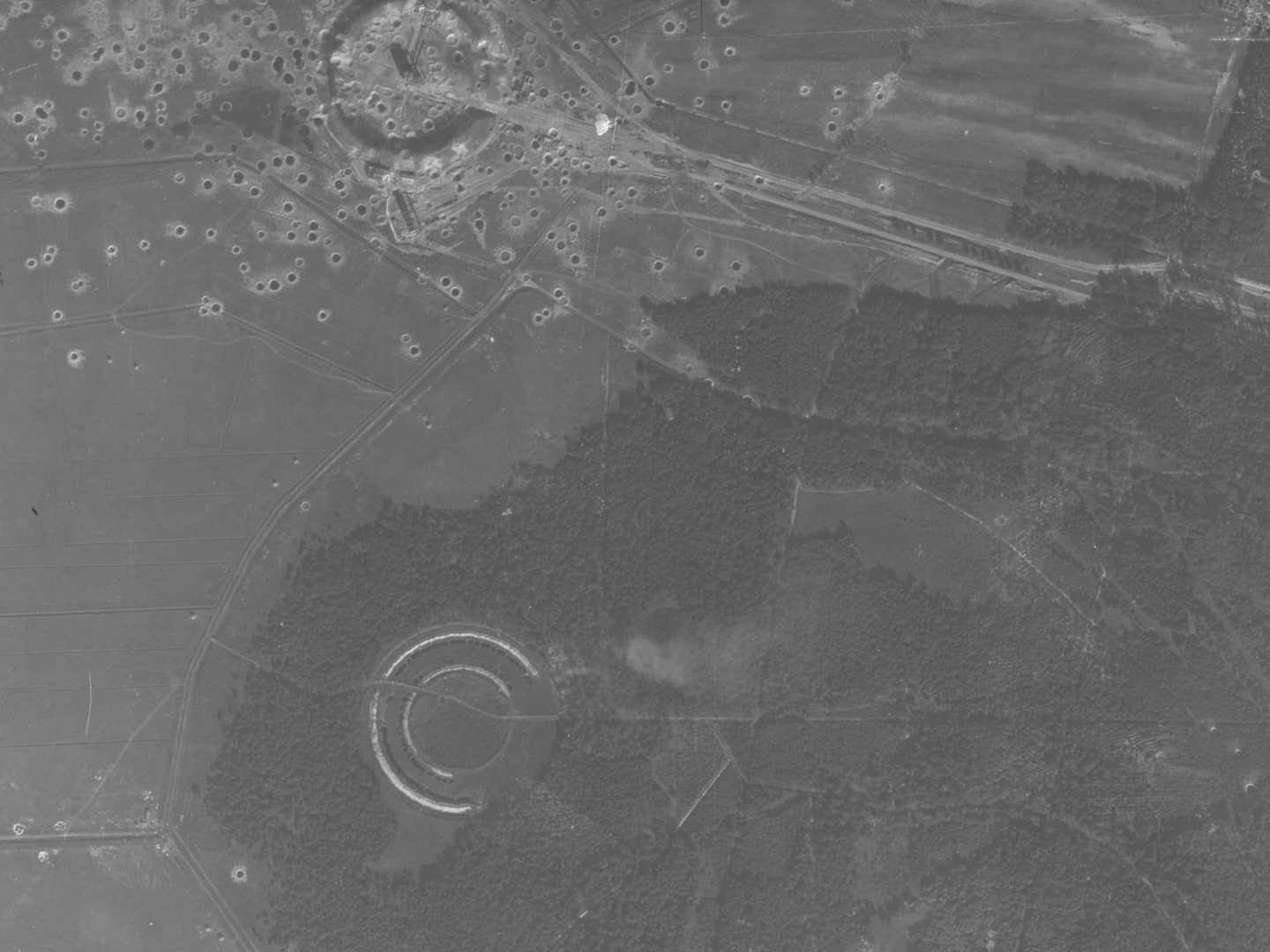
Shadow and Tone
Shadows can reveal the profile or outline of an object, and are useful for determining its shape, height and construction. Shadows can show whether a feature is of open or solid construction, and can reveal the shape of a roof structure. Low-angle sunlight will cast long shadows from the slightest ground features. Tree shadows can be used to distinguish between coniferous and deciduous types. The height of an object can even be calculated from its shadow length, if the time and location of the photograph is known.
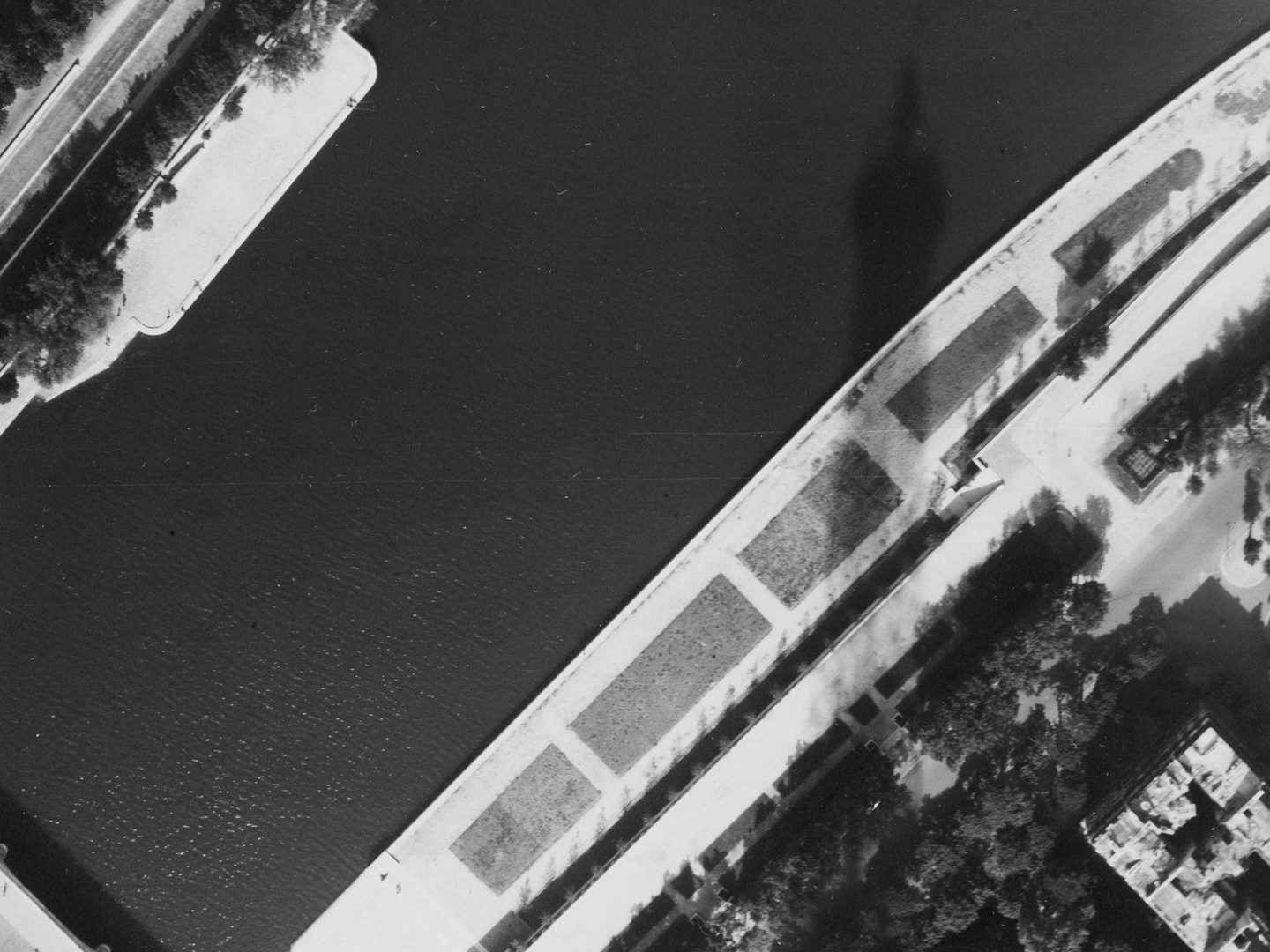
The relative brightness of objects in an image is described by the term 'tone'. Tone is related to both texture and colour and is the measure of the amount of light reflected back to the camera by an object. The smoother the surface of an object, the greater is the amount of light reflected, while the colour of an object has less effect on tone than might be expected. This is why a black asphalt road may appear lighter than a green field of grass.

Association
One way to understand what an object might be is its association to identifiable features on the ground. Gas holders, chimneys and roundabouts might all appear as ‘round’ features in a photograph. The presence of a gasworks, factory or road junction would provide context to help identify which of these it might be.
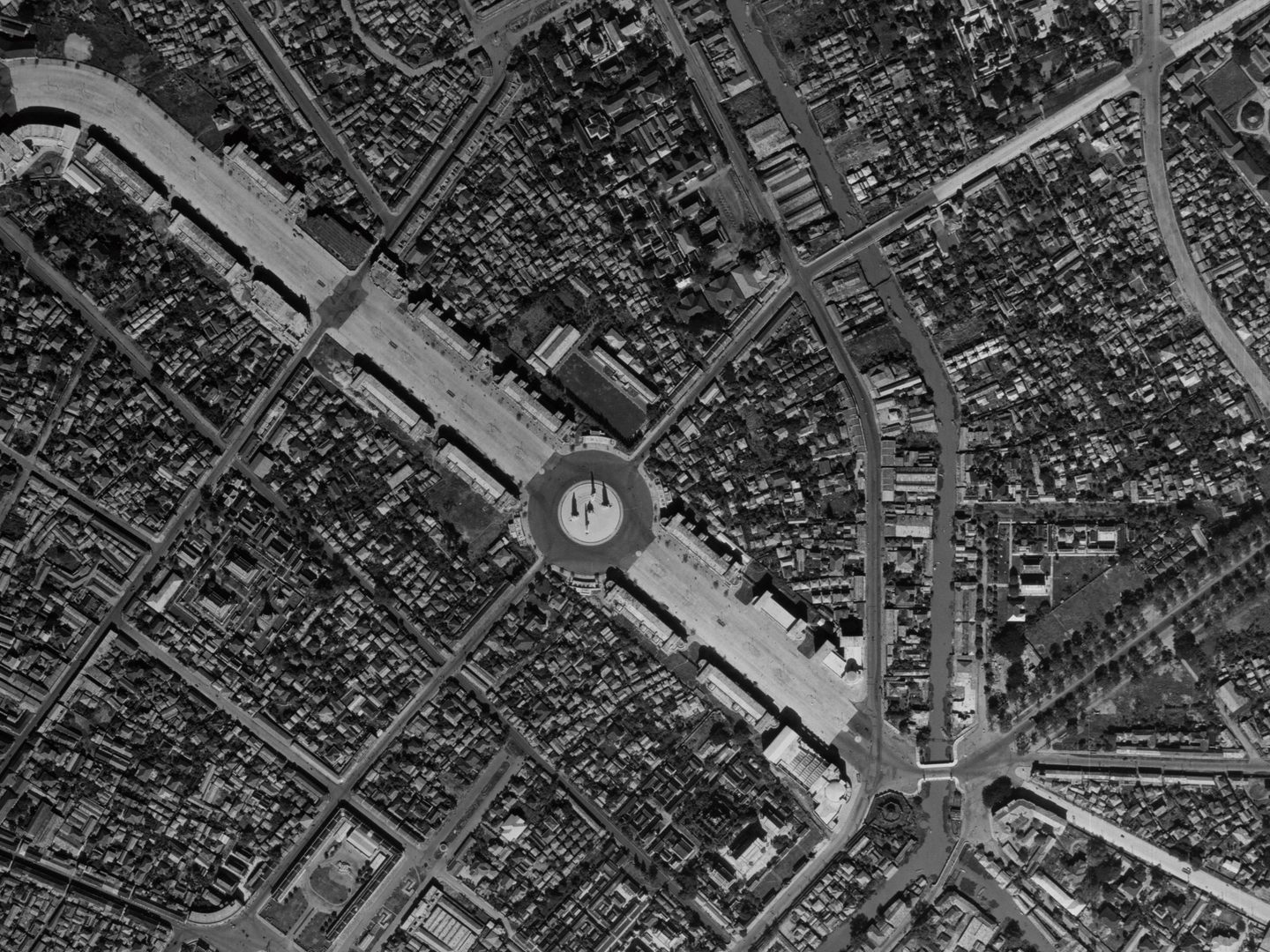
More Guides
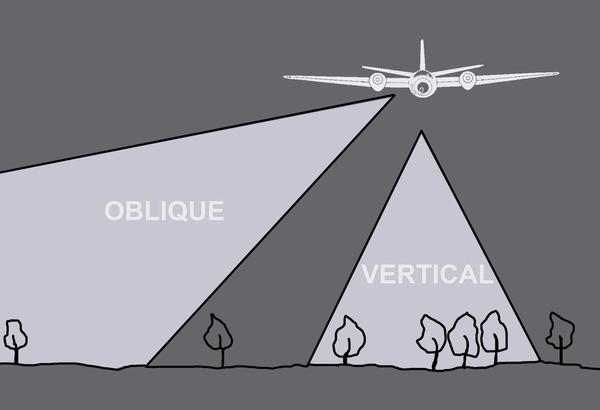
Types of Aerial Images
The capture of aerial photography has most often been been a systematic process. Learn to identify each type and see how they differ.
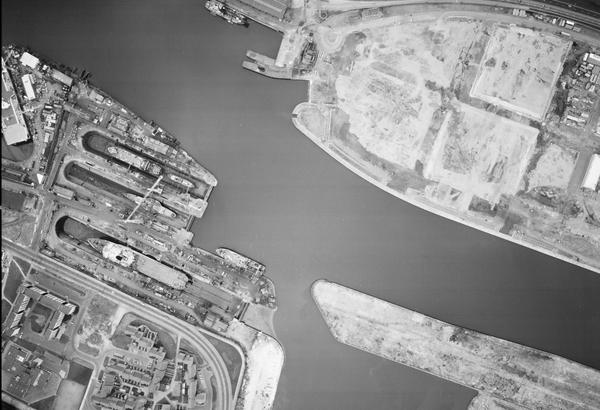
Scale in Aerial Images
Aerial photographs come in a range of different scales. Learn what impact different scales have on understanding aerial photographs.
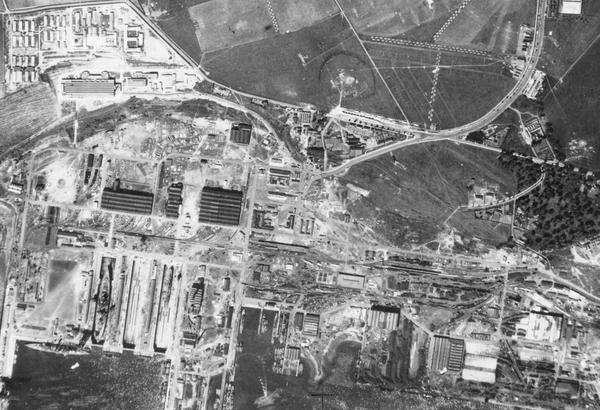
Interpreting Aerial Images
Learn more about how to analyse and understand aerial imagery to make the best use of it for your research needs.